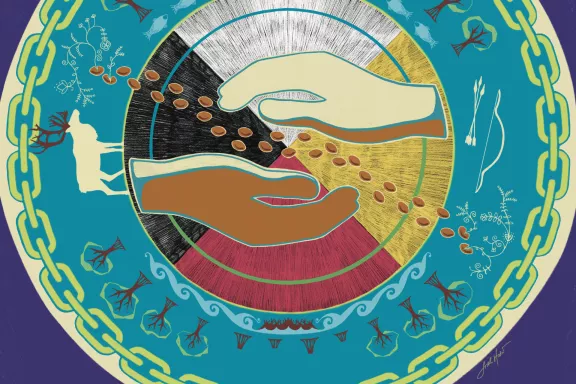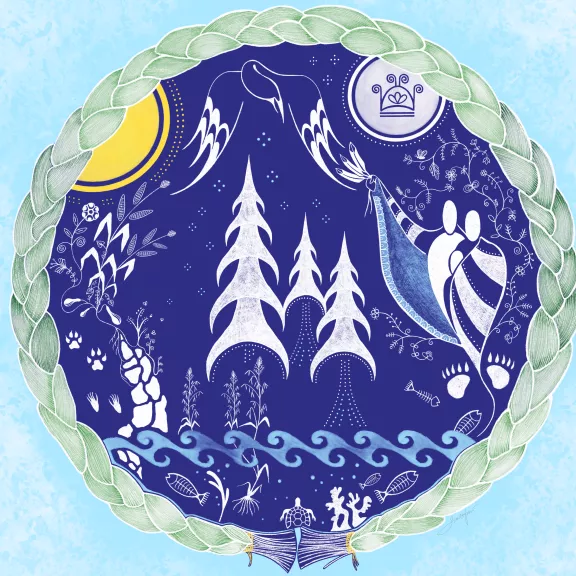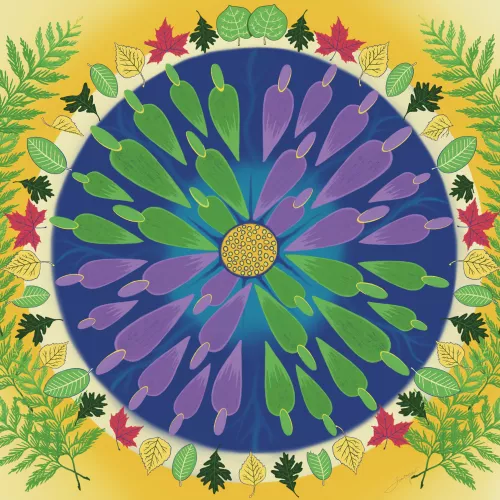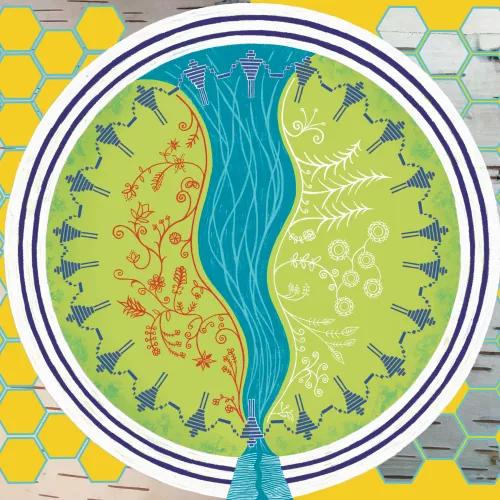

Written by Star Horn, Kanien'kehá:ka artist
To better address climate change, we could well do with a change in perspective. Inspired by how Indigenous people view the world and their place in it, the accompanying work depicts a holistic world view centered on the understanding that human existence is deeply intertwined with the natural world.
In Indigenous culture, respect and honour is given to everything humans rely on to survive, from water, air, and healthy soils, to the sun, the moon’s gravitational pull, and all life on Earth. As stewards of the Earth, kinship, sharing, and finding balance where everyone’s needs are met are priorities. Importance is placed on coexistence with all things on Mother Earth, where true measurement of the true economy is determined by the health oft he whole. Moving beyond common beliefs of existence, Indigenous cultures accept that all materials, animals and humans have spirits and should be respected given their contributions to the richness of life. Interacting with the world in this mindset forces one to make meaningful choices; ones that affect generations to come.
Braided Sweetgrass depicts the Mind/Body/Spirit concept which creates a stronger, balanced, and ‘whole’ person. On the left, corn, beans, and squash are depicted to illustrate how each crop lives symbiotically with the others, fed by the light of the sun. Water, the source of all life, sustains the growth of fish, seaweed, and wild rice; traditional foods sourced from water. Plants and flowers represent the sustenance and medicines they provide to humans and animals, and their importance as regenerative natural systems. Animals can be seen throughout the work as sustainers of life. The tracks of bear and wolf, and the turtle represent the 3 clans of the Kanien'kehá:ka (“People of the Flint” or Mohawk) and the importance of animals we live amongst. Humans are present, intertwined with world on equal planes with animals and inanimate objects to depict respect and their role as stewards of the natural world. In the upper right corner, the Moon is visible, vital to the Earth’s oceans and all nocturnal beings. A symbol of the three levels of the Kanien'kehá:ka cosmos, the skydome signifies the celestial world, our world, and the world of darkness.
Nia:wen

